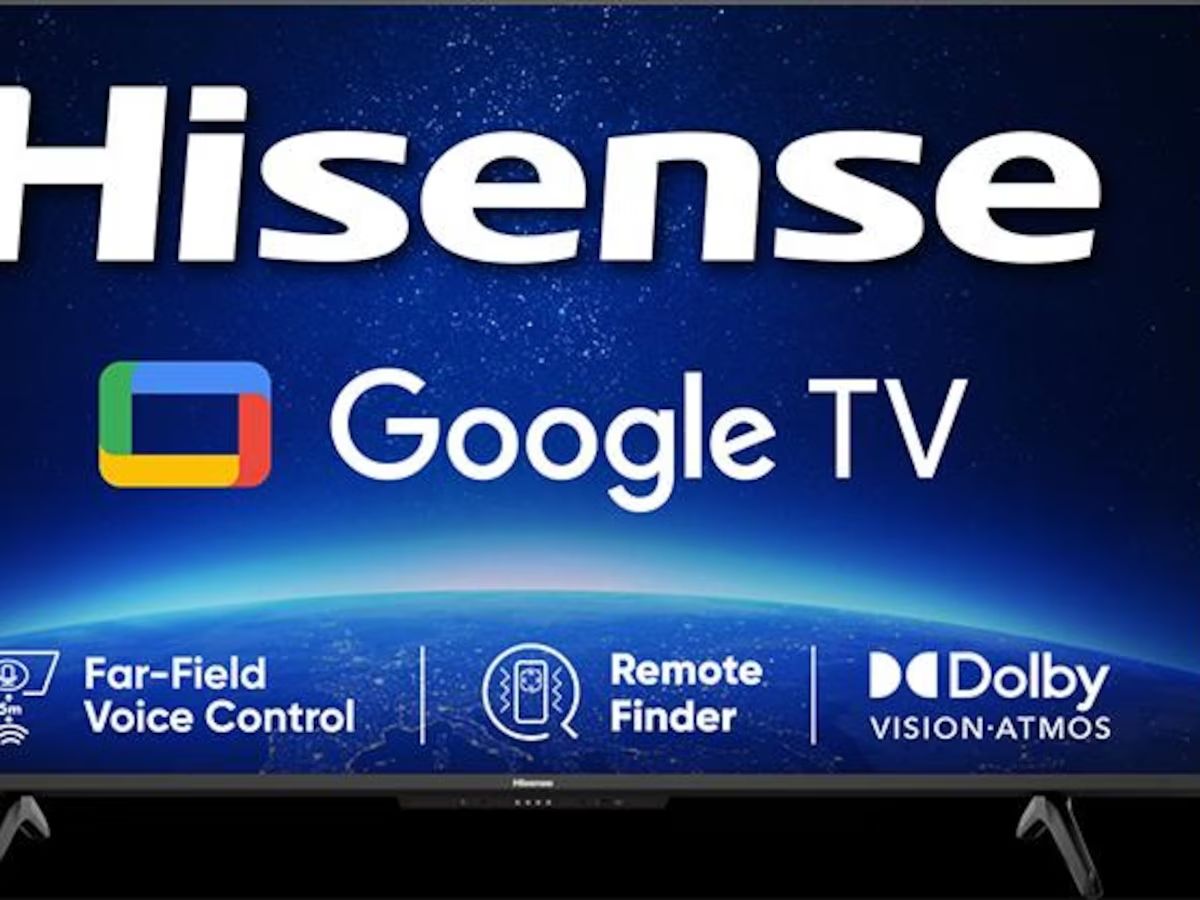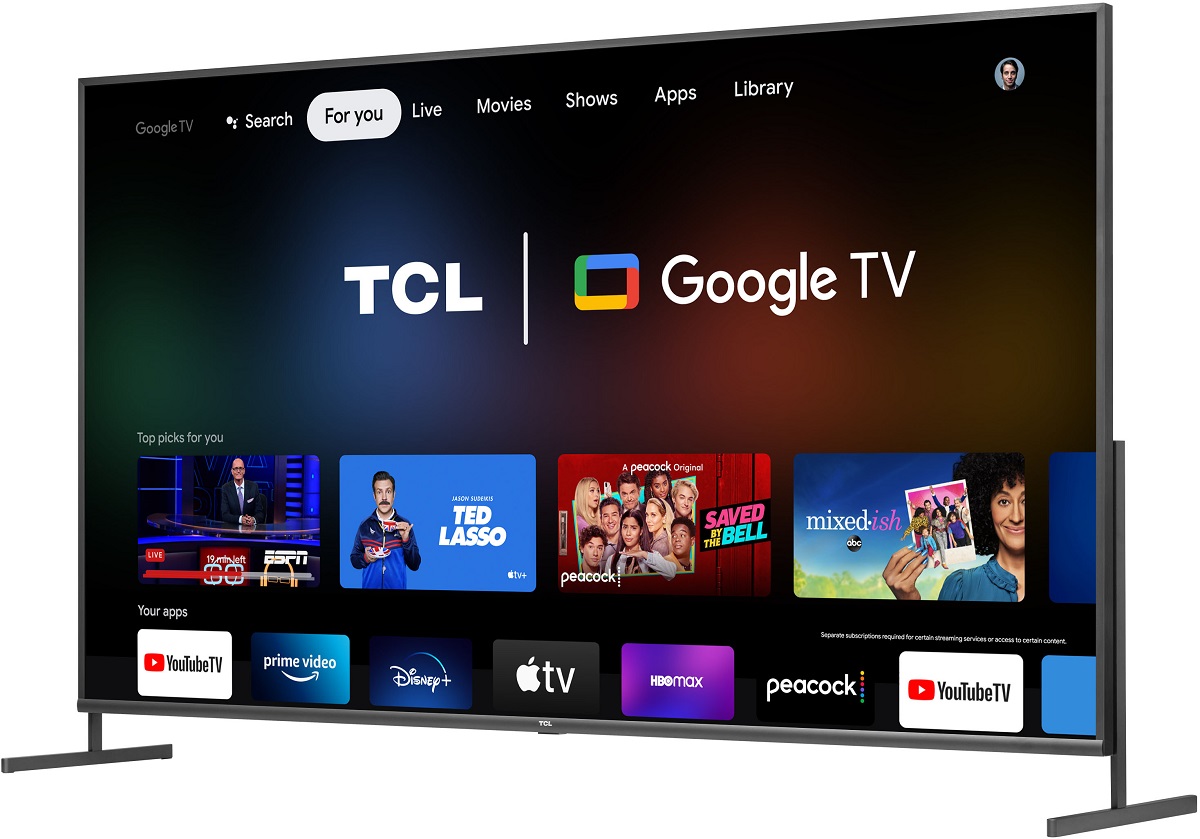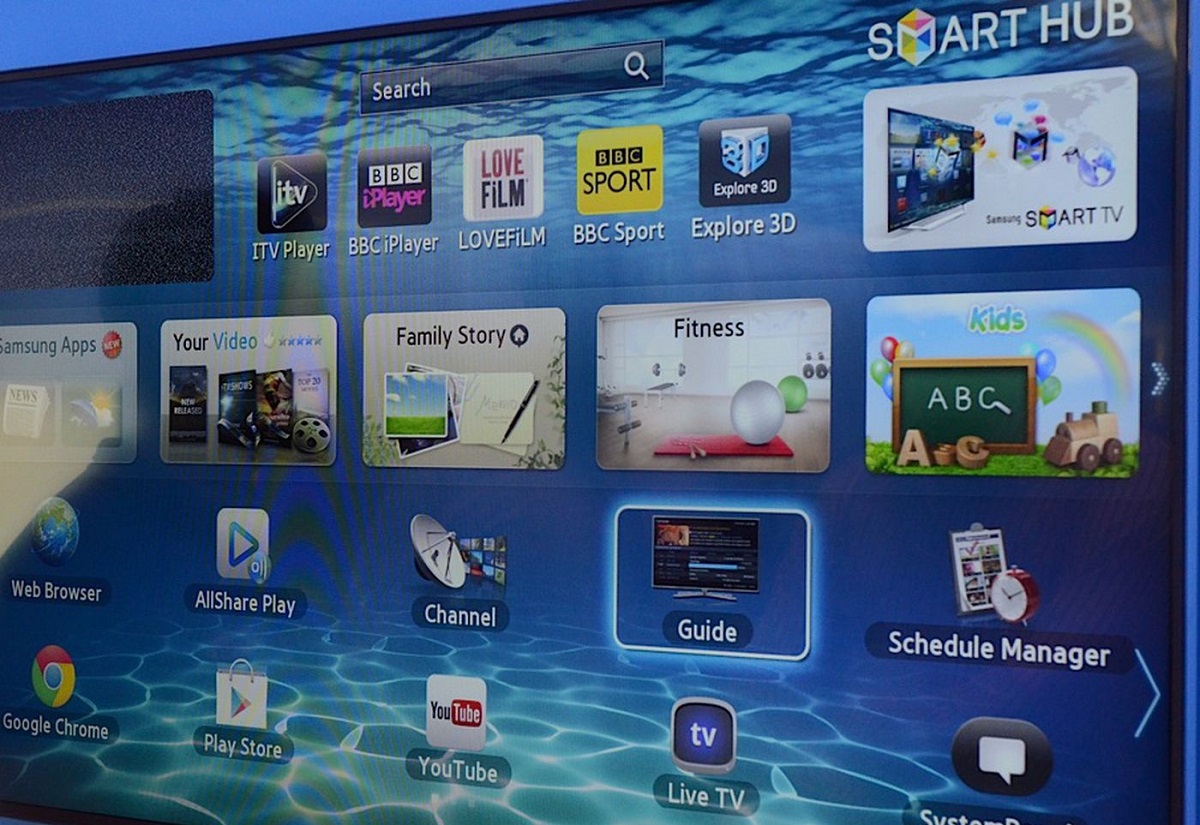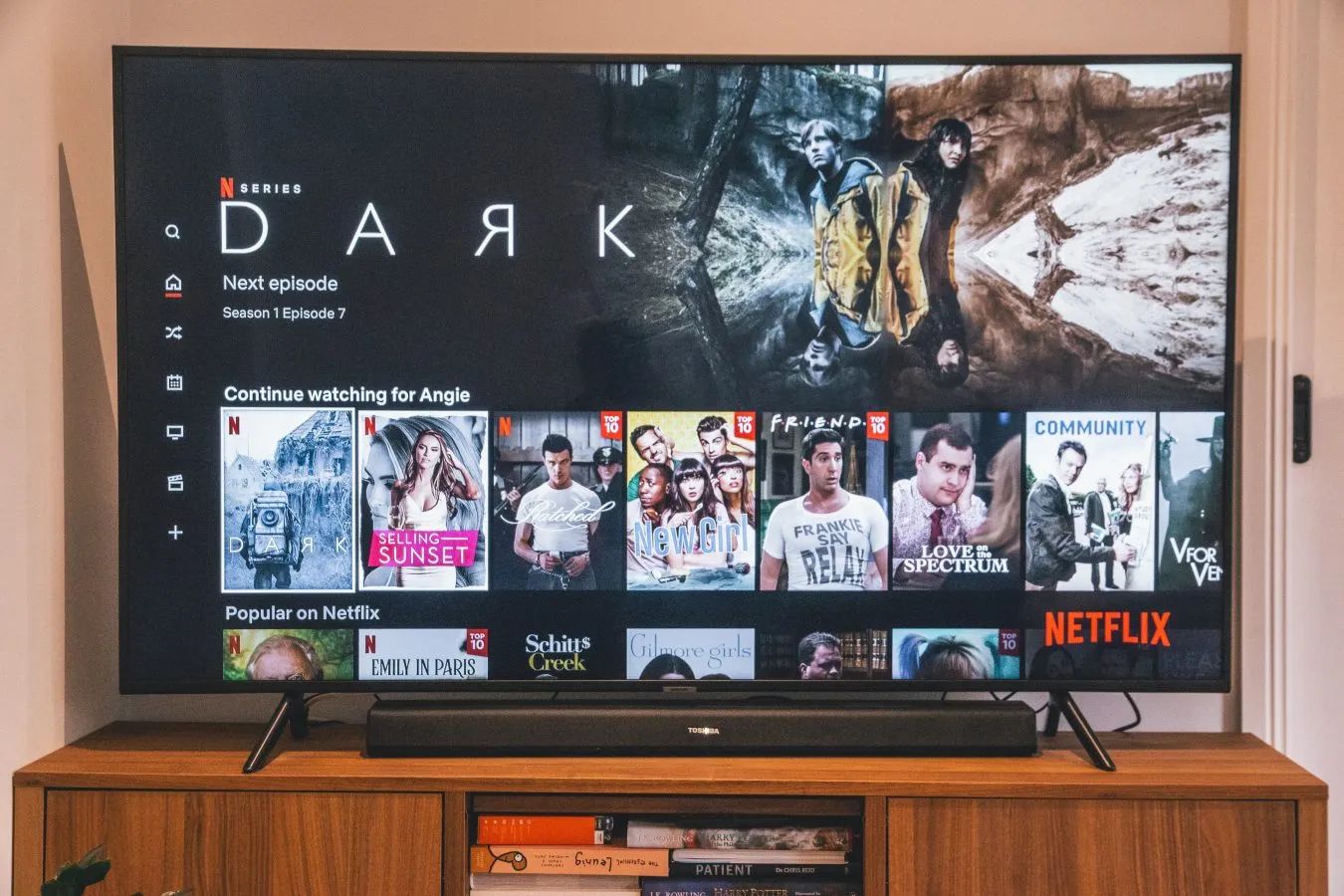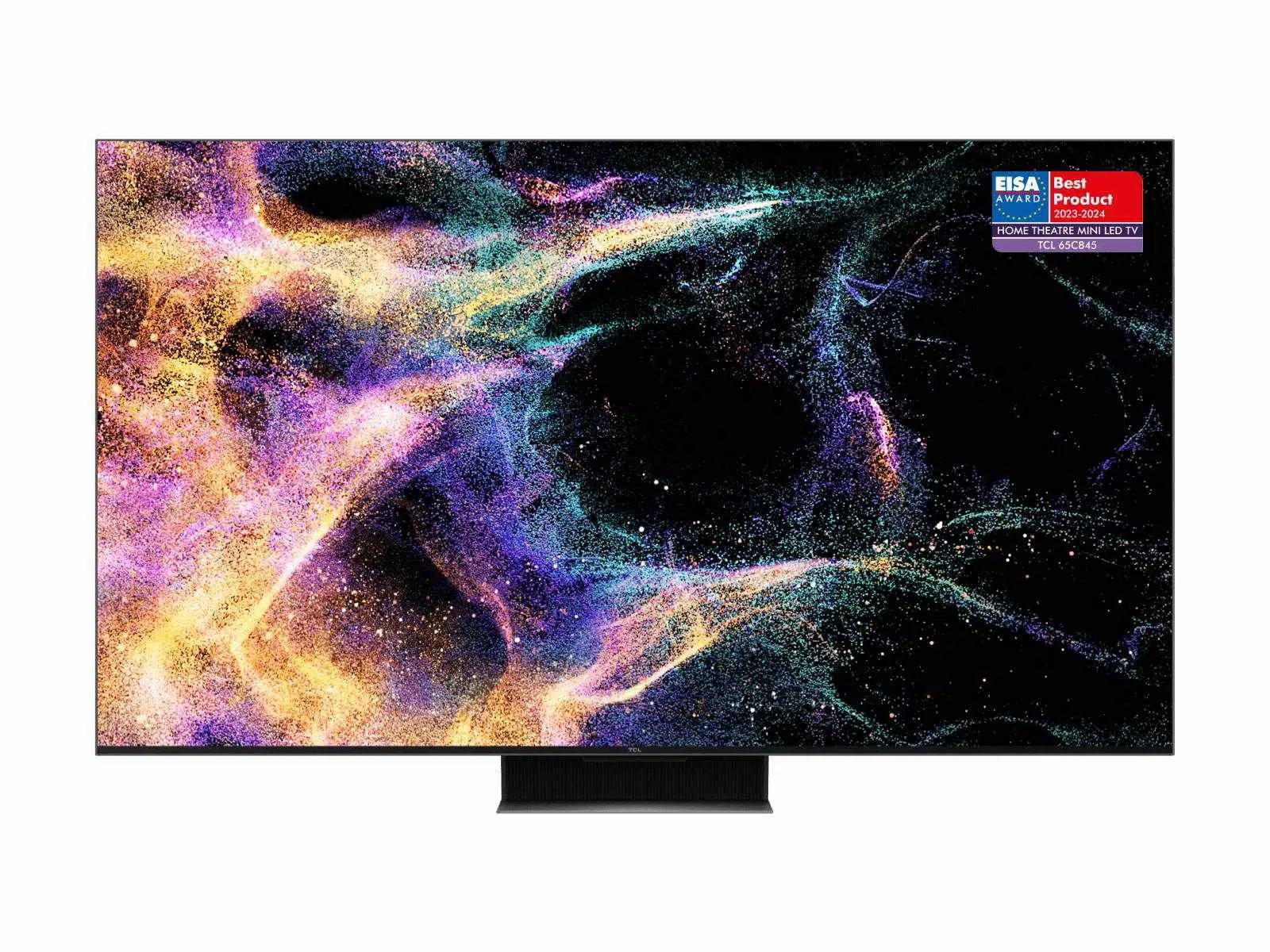Introduction
The world of television has evolved significantly over the years, and with the rise of technology, we now have an array of choices when it comes to our viewing experience. Two popular options that have gained traction in recent years are Smart TVs and Google TVs. While both offer advanced features and functionality, they differ in several key aspects. In this article, we will explore the differences between a Smart TV and a Google TV to help you better understand which option may be the best fit for your entertainment needs.
Smart TVs have revolutionized the way we consume media by integrating internet connectivity and a wide range of applications into our televisions. These televisions usually come with built-in Wi-Fi, giving users access to popular streaming services such as Netflix, Hulu, and Amazon Prime Video. Additionally, they offer the convenience of browsing the internet, social media interaction, and the ability to download various apps to enhance the viewing experience.
On the other hand, Google TVs are a specific type of Smart TV that utilizes Google’s Android operating system to deliver a seamless and personalized entertainment experience. Designed to bring the power of Google to your television, Google TVs provide access to the extensive Google Play Store, allowing users to download and enjoy a wide range of apps and games on their TV screens.
Throughout this article, we will delve into the different aspects of Smart TVs and Google TVs, including their operating systems, apps and services, internet browsing capabilities, voice search and commands, content recommendations, integration with other devices, and price ranges. By exploring these areas, you will gain a comprehensive understanding of the unique features and functionalities each option offers.
Definition of a Smart TV
A Smart TV is a television set that is equipped with internet connectivity and built-in software to provide users with an interactive and connected viewing experience. Unlike traditional televisions, which can only receive broadcast signals, a Smart TV utilizes internet protocols to stream content directly from online platforms. This allows users to access a vast selection of digital content, including movies, TV shows, music, and more, all from the comfort of their living room.
One of the key features of a Smart TV is its ability to connect to the internet via either Ethernet or Wi-Fi. This connectivity allows users to access popular streaming services like Netflix, Hulu, and Amazon Prime Video, giving them an extensive library of on-demand content. Additionally, Smart TVs often include web browsers, enabling users to surf the internet, visit their favorite websites, and engage in online activities directly from their television screens.
To facilitate the streaming and browsing experience, Smart TVs incorporate powerful processors and sufficient RAM to handle the demands of modern applications. Some models even come equipped with dedicated graphics processors, ensuring smooth playback and vibrant visuals. These technological advancements make it possible for users to enjoy high-definition and 4K content without the need for additional streaming devices or set-top boxes.
In terms of software, Smart TVs typically run on proprietary operating systems that are specifically designed to optimize the television experience. These operating systems offer user-friendly interfaces and intuitive navigation menus, making it easy to browse through apps, switch between content, and customize settings. Furthermore, Smart TV manufacturers often provide regular software updates to ensure the device remains up-to-date with the latest features and security enhancements.
Overall, a Smart TV brings the power of the internet and multimedia capabilities directly to your television. It offers convenience, flexibility, and a wide range of entertainment options, transforming the way we consume content in the modern digital age. With the ability to seamlessly integrate with other smart devices and provide access to an expansive library of content, Smart TVs have become an essential part of many households worldwide.
Definition of a Google TV
Google TV is a specific type of Smart TV that utilizes Google’s Android operating system to deliver a highly interactive and personalized entertainment experience. It combines the traditional TV viewing experience with the power of the internet and the vast ecosystem of Google services and applications. With a Google TV, users can access a wide range of content, including streaming services, apps, and games, all from a single interface.
One of the defining features of a Google TV is its integration with the Google Play Store. This allows users to download and install various applications directly onto their television screens, expanding the capabilities and entertainment options of the device. Whether it’s streaming platforms like Netflix, YouTube, or Disney+, or other applications for productivity, gaming, or social media, Google TV provides access to a vast library of apps.
In addition to the extensive app selection, Google TV also offers seamless integration with Google Assistant, the virtual assistant developed by Google. Users can control their Google TV using voice commands, search for content, ask questions, and even control compatible smart home devices, all without the need for a separate remote control. This voice-activated feature enhances the convenience and accessibility of the television experience.
Another notable aspect of Google TV is its emphasis on content recommendation. The system utilizes advanced algorithms to analyze users’ viewing habits, interests, and preferences to provide personalized recommendations. These recommendations appear on the home screen, making it easier for users to discover new shows, movies, and content that align with their interests. This feature enhances the user experience by curating content based on individual preferences.
Moreover, Google TV offers a smooth and intuitive interface, making it easy for users to navigate through menus, switch between apps, and control their viewing experience. The interface is often customizable, allowing users to arrange their favorite apps and content in a way that suits their preferences. This level of customization ensures that users have a tailored entertainment experience on their Google TV.
In summary, Google TV is a Smart TV that leverages the powerful Android operating system and integrates seamlessly with the Google ecosystem. It provides access to a wide variety of apps, games, and streaming services, while also offering features like voice control and personalized content recommendations. With its user-friendly interface and extensive customization options, Google TV offers a cutting-edge television experience that caters to the individual preferences and needs of users.
Operating Systems
Operating systems play a crucial role in determining the functionality, user interface, and overall experience of both Smart TVs and Google TVs. A Smart TV usually comes with its own proprietary operating system developed by the manufacturer. These operating systems are designed to optimize the television experience, offering intuitive navigation menus, app stores, and customization options.
On the other hand, Google TVs utilize the Google Android operating system, which brings the familiar and robust Android ecosystem to the television screen. This means that Google TVs have access to the extensive Google Play Store, allowing users to download and enjoy a wide range of apps and games specifically designed for Android devices.
The proprietary operating systems found in Smart TVs offer a more tailored and streamlined experience, as they are specifically optimized for the hardware and features of the television. Manufacturers often include their own app stores, which curate a selection of applications that have been tested and optimized for compatibility with the television. These operating systems are typically user-friendly, with intuitive menus and navigation options that make it easy to access content and settings.
In contrast, Google TV leverages the power and versatility of the Android operating system, offering a more flexible and robust ecosystem. The Google Play Store provides access to a vast array of applications, including popular streaming services, productivity tools, social media platforms, and games. With the Android operating system, users can also benefit from seamless integration with other Google services, such as Google Assistant, Google Photos, and Google Drive.
Both operating systems have their advantages and drawbacks. Proprietary operating systems found in Smart TVs offer a more tailored and cohesive experience, with optimized apps and user interfaces. On the other hand, Google TV’s use of the Android operating system provides access to a wider selection of apps and integrates seamlessly with other Google services.
It is important to consider your specific needs and preferences when choosing between a Smart TV and a Google TV based on their operating systems. If you value a highly personalized and versatile experience with an extensive app selection, then a Google TV may be the right choice for you. However, if you prefer a more streamlined and cohesive user interface, along with optimized apps for your television, then a Smart TV with a proprietary operating system may be the better option.
Apps and Services
When it comes to apps and services, both Smart TVs and Google TVs offer a wide range of options to enhance the entertainment experience. Smart TVs come preloaded with a selection of popular streaming apps, allowing users to access platforms like Netflix, Hulu, Amazon Prime Video, and more. Additionally, many Smart TVs have their own app stores, where users can download additional applications to personalize their viewing experience.
Google TVs take app availability to another level through integration with the Google Play Store. This means that users have access to a vast library of apps and games, just like on Android smartphones and tablets. From streaming platforms to productivity tools and gaming apps, Google TVs provide a virtually limitless selection of apps to choose from. Google TVs also benefit from regular updates to the Google Play Store, ensuring that users have access to the latest and greatest apps.
Moreover, both Smart TVs and Google TVs offer a range of services beyond streaming apps. Many Smart TVs come with built-in web browsers, allowing users to access websites, social media platforms, and even online shopping sites directly from their television. This can bring a whole new level of convenience, especially when it comes to browsing content or making purchases from the comfort of your living room.
Google TVs, powered by the Android operating system, can also take advantage of various Google services. This includes Google Assistant, which allows users to control their TV using voice commands. With Google Assistant, users can search for content, navigate through apps, adjust settings, and even control other smart devices in their homes. This hands-free control adds an extra layer of convenience to the viewing experience.
Both Smart TVs and Google TVs offer a considerable number of apps and services, but there can be slight variations in availability between different models and manufacturers. It is important to research and compare the app offerings of different TVs to ensure that they meet your specific needs.
In summary, Smart TVs provide access to popular streaming apps and often have their own app stores for additional customization. Google TVs, powered by the Android operating system, offer the extensive Google Play Store, providing a vast selection of apps and games. Both types of TVs also offer additional services such as web browsing, social media access, and voice control. Ultimately, your choice will depend on the specific apps and services you prioritize for your viewing experience.
Internet Browsing
One of the key features of both Smart TVs and Google TVs is the ability to browse the internet directly from your television. This functionality allows users to access websites, stream online content, and engage in various online activities, all from the comfort of their living room.
Smart TVs generally come equipped with their own web browsers, specifically designed for television screens. These browsers offer a simplified and user-friendly interface, making it easy to navigate through web pages using a remote control or a connected keyboard. Users can visit their favorite websites, check social media, read news articles, and even participate in online shopping, all without the need for a separate device like a laptop or smartphone.
Google TVs, with their integration of the Android operating system, take the browsing experience a step further. Google TVs have access to the Google Play Store, where users can download and install a variety of web browsers, including popular options like Google Chrome and Mozilla Firefox. These browsers provide a more familiar and robust internet browsing experience, with features such as tabbed browsing, bookmark syncing, and support for extensions.
Both Smart TVs and Google TVs utilize internet connectivity, either through Wi-Fi or Ethernet, to access the web. This means that users can stream online videos and music, browse social media feeds, check email, and enjoy other online activities directly on their television screens. The larger display of a TV compared to a computer or smartphone provides a more immersive and enjoyable browsing experience.
However, it is important to note that the internet browsing experience on a TV may not be as seamless as on a dedicated device like a laptop or smartphone. TVs typically have limited processing power and may not support all website features, such as Flash-based content or complex web applications. Additionally, typing using a remote control or an on-screen keyboard can be slower and less efficient compared to a physical keyboard.
In summary, both Smart TVs and Google TVs offer the convenience of internet browsing on your television. Smart TVs usually come with their own web browsers, while Google TVs provide access to popular web browsers through the Google Play Store. While the browsing experience may be more limited compared to dedicated devices, the larger screen and comfortable viewing environment make TV browsing a viable option for various online activities.
Voice Search and Commands
Voice search and voice commands have become increasingly popular features in modern technology, and both Smart TVs and Google TVs have embraced this trend to enhance the user experience. By using voice recognition technology, users can control their TVs, search for content, and interact with various functions, all through simple voice commands.
Smart TVs often come equipped with voice search capabilities, allowing users to search for specific shows, movies, or actors by speaking into their remote control. This eliminates the need to manually enter text using a remote control or an on-screen keyboard, making the search process quicker and more convenient. With voice search, users can find the content they want to watch simply by saying the title or the name of an actor, saving time and effort.
Google TVs, powered by the Android operating system, take voice commands to the next level with the integration of Google Assistant. Google Assistant is a virtual assistant developed by Google that offers extensive voice control capabilities. Users can not only search for content but also control various functions of the TV using voice commands. For example, users can adjust the volume, change channels, open apps, and even control other compatible smart devices in their homes, all by speaking to their Google TV.
Voice commands offer a hands-free and intuitive way of interacting with your TV. It takes away the need to navigate through menus or press buttons on the remote control, making the TV experience more seamless and enjoyable. Whether you want to change the channel, pause the playback, or search for a specific show, voice commands make it easier and quicker to accomplish these tasks.
It is important to note that the effectiveness and accuracy of voice search and commands can vary depending on the TV model and the voice recognition technology used. Some TVs may have more advanced voice recognition capabilities, leading to improved accuracy and better response to commands. Additionally, accents or speech patterns may affect the recognition accuracy, so it’s worth testing the voice functionalities to ensure they work well for you.
In summary, both Smart TVs and Google TVs offer voice search and voice control features to enhance the user experience. Smart TVs typically offer voice search capabilities, while Google TVs leverage the power of Google Assistant for a more comprehensive voice control experience. Voice commands offer convenience and ease of use, allowing users to interact with their TVs without the need for manual input or navigation.
Content Recommendations
Finding interesting and relevant content to watch can sometimes be a challenge, especially with the vast amount of options available. Both Smart TVs and Google TVs aim to address this issue by providing personalized content recommendations based on user preferences and viewing habits.
Smart TVs often offer built-in algorithms that analyze user behavior, such as the shows they watch and the genres they prefer, to generate content recommendations. These recommendations appear on the home screen or in a dedicated section, making it easy for users to discover new shows, movies, or channels that align with their interests. These systems aim to tailor the viewing experience to each individual user, making it more enjoyable and reducing the time spent searching for something to watch.
Google TVs, with their integration of the Android operating system, leverage the power of Google’s extensive data and machine learning algorithms to provide personalized content recommendations. These recommendations take into account not only the user’s viewing habits on their TV but also their activities across other Google services, such as YouTube and Google Play Music. This broader pool of data allows for more accurate and refined recommendations.
The content recommendations on both Smart TVs and Google TVs are intended to introduce users to new content that they might enjoy, based on their preferences. These recommendations can include popular TV shows, trending movies, or personalized playlists based on previous viewing habits. By tailoring the content suggestions to each user, Smart TVs and Google TVs aim to enhance the overall television experience and facilitate the discovery of new and engaging content.
It is worth noting that the quality and accuracy of content recommendations may vary depending on the algorithms used by the TV manufacturer or platform provider. Additionally, users have the option to provide feedback on the recommendations to further improve the system’s understanding of their preferences.
In summary, both Smart TVs and Google TVs offer content recommendations that aim to personalize the viewing experience and help users discover new content. Smart TVs utilize built-in algorithms, while Google TVs leverage the power of Google’s machine learning algorithms and data. These recommendations aim to enhance user satisfaction by offering a curated selection of shows, movies, and channels that align with their interests and viewing habits.
Integration with Other Devices
Integration with other devices has become a sought-after feature in the world of televisions, allowing users to connect and control their TVs with various other smart devices in their homes. Both Smart TVs and Google TVs offer different levels of integration to meet the needs of users who want a seamless and interconnected entertainment experience.
Smart TVs often support connectivity with other devices through technologies like HDMI and Bluetooth. This enables users to connect game consoles, Blu-ray players, soundbars, and other devices to their TV, creating a comprehensive entertainment setup. Users can control these devices using the TV’s remote control, reducing clutter and offering a more streamlined experience. Additionally, some Smart TVs offer additional capabilities like screen mirroring, which allows users to display the content of their smartphones, tablets, or laptops directly on their TV screens.
With Google TV’s integration of the Android operating system, the level of device integration is extended even further. Users can connect and control other Google Assistant-compatible devices, such as smart speakers, smart lights, and smart thermostats, using voice commands directly through their Google TV. This level of integration creates a cohesive and interconnected smart home ecosystem, where users can manage and control various devices from their TV.
Google TV also offers the Chromecast functionality, allowing users to cast videos, music, and other content from their smartphones, tablets, or computers to their TV screens. This enables users to access a wider range of content apps and enjoy the convenience of controlling playback from their personal devices.
It is important to note that the level of integration with other devices may vary depending on the specific TV model and manufacturer. Some TVs may offer more comprehensive compatibility with certain devices or platforms, while others may have more limited options. It is advisable to check the specifications and features of the TV before making a purchase, especially if device integration is a priority for you.
In summary, both Smart TVs and Google TVs offer integration with other devices to enhance the entertainment experience and create a more connected ecosystem. Smart TVs often support connectivity through HDMI and Bluetooth, while Google TVs provide integration with Google Assistant-compatible devices and the Chromecast functionality. The level of integration will depend on the specific TV model, so it is essential to research and consider your specific device compatibility needs when choosing a TV.
Price Range
Price is an important factor to consider when choosing between a Smart TV and a Google TV. The price range for both options can vary depending on several factors, including the brand, screen size, display technology, and additional features.
In general, Smart TVs are available in a wide range of price points, making them accessible to a broad range of consumers. The price can start from a few hundred dollars for smaller screen sizes and basic features, and go up to several thousand dollars for larger screens, high-resolution displays, and advanced functionalities. The cost will also differ based on the brand and the specific technology used for the display, such as LED, OLED, or QLED.
On the other hand, Google TVs tend to be positioned in the mid-to-high price range due to their advanced features and integration with the Android operating system. This means that the starting price for Google TVs is typically higher compared to entry-level Smart TVs. However, this higher price point often comes with additional benefits, such as the extensive app selection available through the Google Play Store and the integration of Google Assistant for voice control and smart home management.
It is worth noting that while both Smart TVs and Google TVs can be a significant investment, there is a wider range of options available for Smart TVs in terms of price and features. This means that consumers have more flexibility to find a Smart TV that fits their budget and specific needs.
When considering the price, it is essential to weigh the features, performance, and value that each TV offers. While Google TVs may have a higher upfront cost, the advanced capabilities and integration with the Android ecosystem may provide added value and convenience for certain users. On the other hand, if budget is a significant factor, Smart TVs offer a more affordable entry point into the world of connected televisions.
Ultimately, the price range for both Smart TVs and Google TVs can vary significantly based on factors such as brand, size, display technology, and added features. It is essential to do thorough research, consider your budget and requirements, and compare different TVs to find the best fit for your needs.
Conclusion
In conclusion, both Smart TVs and Google TVs offer advanced features and functionalities that enhance the viewing experience. Smart TVs, with their built-in internet connectivity and app stores, provide access to popular streaming services, web browsing capabilities, and a customizable user interface. On the other hand, Google TVs, powered by the Android operating system, offer a more versatile and personalized experience with access to the extensive Google Play Store, Google Assistant integration, and advanced content recommendations.
When it comes to operating systems, Smart TVs generally run on proprietary systems developed by the manufacturers themselves. These systems are optimized for the hardware and features of the TV, providing a streamlined and cohesive user interface. In comparison, Google TVs utilize the Android operating system, which offers a more robust ecosystem and extensive app availability through the Google Play Store.
Both Smart TVs and Google TVs excel in offering a wide range of apps and services to enhance the entertainment experience. Smart TVs provide access to popular streaming apps and often include web browsing capabilities, while Google TVs offer a vast selection of apps through the Google Play Store and provide seamless integration with Google Assistant.
When it comes to internet browsing, Smart TVs come with their own web browsers, while Google TVs offer the option to download popular web browsers from the Google Play Store. Both options provide the convenience of accessing websites, social media platforms, and online shopping directly from the TV.
Voice search and commands have become increasingly popular features, and both Smart TVs and Google TVs offer them to enhance the user experience. Smart TVs typically offer voice search capabilities, while Google TVs leverage the power of Google Assistant to provide comprehensive voice control features.
Content recommendations are a valuable feature offered by both Smart TVs and Google TVs. These recommendations are tailored to the user’s preferences and viewing habits, making it easier to discover new and interesting content that aligns with their interests.
Integration with other devices is another important aspect to consider. Smart TVs often offer connectivity with other devices through HDMI and Bluetooth, while Google TVs provide additional integration with other Google Assistant-compatible devices and the ability to cast content from smartphones and computers through Chromecast.
The price range for Smart TVs is typically more varied, with options available for different budgets and needs. Google TVs, on the other hand, tend to be positioned in the mid-to-high price range due to their advanced features and integration with the Android ecosystem.
In summary, the choice between a Smart TV and a Google TV will depend on your specific preferences and requirements. Smart TVs offer a more accessible entry point and often come with a wide range of models and price options. On the other hand, Google TVs provide a more comprehensive and adaptable entertainment experience, with extensive app availability, advanced voice control, and the integration of Google Assistant for smart home management. Consider your needs, budget, and desired features to make an informed decision and enjoy the benefits of a connected television.










